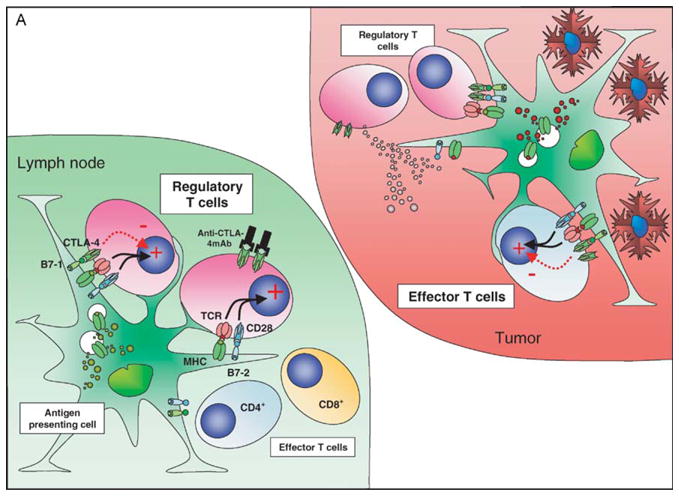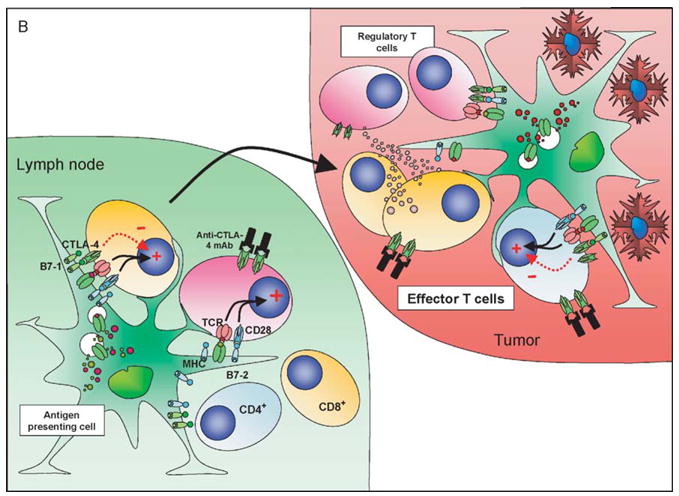Figure 2.


CTLA-4 blockade and cellular vaccines in poorly immunogenic tumors: the effect of CTLA-4 blockade and vaccination with a GM-CSF expressing cellular vaccine for poorly immuno-genic tumors may depend on the local antigenic milieu and priming history of the T cells. In the nonvaccinated host (A) a direct effect on Treg may predominate due to higher TCR affinities, lower requirements for costimulation and predominance of self-antigen presentation, resulting in a relative expansion of Treg compared to other T-cell populations. The tumor infiltrate is characterized by a relatively high proportion of Treg and very low levels of CD8+ T cells. CTLA-4 blockade under these conditions still favors Treg over effector T cells. In the vaccinated host (B) the preferential presentation of tumor-associated antigens in association with high levels of costimulatory molecules allows expansion of effector T-cell populations that can traffic to the tumor, although these cells will now upregulate CTLA-4 expression. Vaccination may be insufficient on its own to eradicate tumor due to the presence of both cell-autonomous and non cell-autonomous inhibitory circuits. The addition of CTLA-4 blockade now tips the balance in favor of the effector population, perhaps aided by the numerical superiority of these cells over tumor-resident Treg resulting in tumor eradication.
